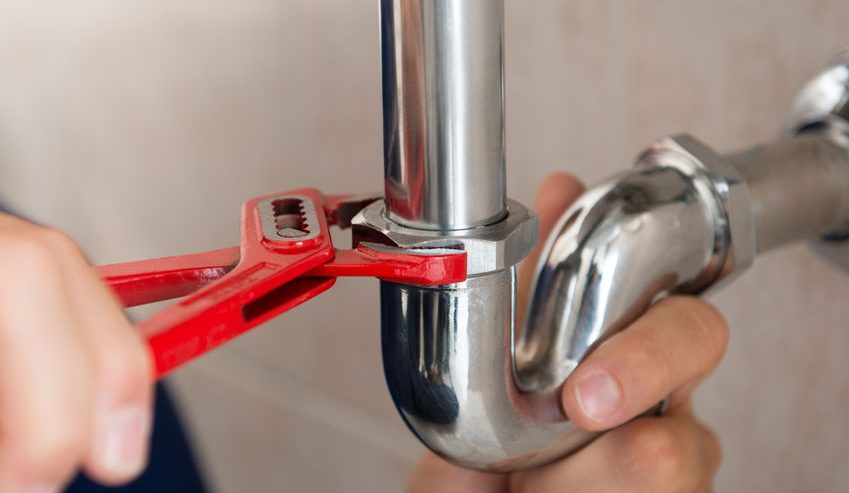Understanding Water Leakage
Water leakage is a common yet serious issue in both residential and commercial properties. It occurs when water escapes from its intended channels, such as pipes, faucets, or roofing systems, causing damage to structures and interiors. Leaks can be obvious, like a dripping faucet, or hidden within walls, ceilings, or under floors. Hidden leaks are particularly dangerous because they often go unnoticed for months, leading to extensive water damage, mold growth, and structural weakening. Common causes include corroded pipes, loose fittings, poor waterproofing, and natural wear and tear. Water leakage repair should be addressed immediately to avoid costly repairs and health risks. Understanding the root cause of leaks is essential for selecting the appropriate repair method and preventing recurrence. Early action ensures both safety and long-term property value.
Common Signs of Water Leakage
Detecting water leaks early can save substantial repair costs and prevent health hazards. Visible signs often include damp or discolored spots on walls, ceilings, or floors, peeling paint, and mold or mildew growth. Sometimes leaks manifest audibly, such as constant dripping sounds or the unusual running of water when all taps are off. Structural signs can appear as sagging ceilings, warping floors, or soft walls, indicating prolonged water exposure. Unexplained high water bills can also be a red flag for hidden leaks in plumbing systems. Even minor leaks should not be ignored because they can escalate into significant damage over time. Being vigilant about these signs allows property owners to intervene promptly and schedule necessary repairs.
Tools and Methods for Detecting Water Leaks
Effective detection is key to water leakage repair. Manual inspections involve checking faucets, showerheads, toilets, and appliances for signs of dripping or moisture buildup. Advanced technology provides more precise detection, including infrared cameras that reveal hidden damp spots and moisture meters that measure water content in walls and floors. Leak detection sensors can alert homeowners in real-time about abnormal water presence, providing proactive protection. Water pressure tests are another method to identify hidden leaks in pressurized plumbing systems. Some professionals use ultrasonic detection to pinpoint leaks without dismantling walls or floors. Combining multiple detection methods ensures accurate identification and reduces the likelihood of missing hidden damage. Proper detection is the first critical step toward an effective repair strategy.
DIY Water Leakage Repair
Minor leaks can often be addressed through simple do-it-yourself methods. Tightening loose fittings, replacing worn-out washers, or applying plumbing sealants can effectively stop small leaks. Temporary solutions like waterproof tape or epoxy putty may help manage leaks until professional assistance is available. DIY repairs work best for accessible and low-risk leaks, such as under sinks or in exposed pipe areas. However, hidden leaks, large pipe bursts, or slab leaks typically require professional expertise. Attempting complex repairs without proper knowledge can worsen the problem or pose safety hazards. DIY solutions should always be paired with careful monitoring to ensure the leak does not recur or worsen.
Professional Water Leakage Repair Services
Hiring a licensed plumber or water damage specialist ensures comprehensive repair and long-term protection. Professionals offer services like pipe replacement, trenchless repairs, slab leak repair, and waterproofing of affected areas. They use specialized equipment and techniques to fix leaks efficiently while minimizing disruption to the property. Professional repair also comes with warranties, ensuring peace of mind for homeowners and commercial property managers. Technicians can identify secondary issues, such as mold growth or structural weakening, and address them as part of the repair process. Timely professional intervention reduces the risk of recurring leaks and costly repairs in the future. For severe leaks or inaccessible pipe systems, professional services are the safest and most reliable solution.
Preventive Measures to Avoid Future Leaks
Preventing water leakage is more cost-effective than repairing extensive damage. Regular plumbing inspections help identify minor issues before they escalate. Proper waterproofing in bathrooms, kitchens, basements, and roof areas reduces the risk of water seeping into walls and floors. Installing water leak detectors and automatic shut-off valves can provide early warnings and prevent significant water loss. Seasonal checks, such as preparing pipes for winter to prevent freeze-related bursts, also contribute to leak prevention. Property owners should consider routine maintenance, including cleaning gutters, replacing old seals, and ensuring pipes are properly insulated. Implementing these preventive strategies creates a safer, more durable property environment.
Cost Considerations for Water Leakage Repair
Repair costs vary widely depending on the severity and type of water leakage. Minor leaks, such as faucet or joint repairs, are generally affordable, while extensive pipe replacement or slab repairs can be expensive. Factors influencing costs include the location of the leak, accessibility, materials required, and labor rates. Unexpected issues discovered during repair, like hidden mold or structural damage, can add to expenses. Budgeting for regular inspections and maintenance can help reduce the likelihood of expensive emergency repairs. Homeowners and property managers should also check insurance coverage, as some water damage repairs may be partially reimbursed. Transparent communication with repair professionals ensures accurate cost estimates and avoids surprises.
Health and Safety Concerns of Untreated Leaks
Ignoring water leaks poses serious health and safety risks. Prolonged exposure to moisture promotes mold and mildew growth, which can cause respiratory problems, allergies, and other health issues. Structural damage from water can weaken floors, ceilings, and walls, increasing the risk of accidents or collapses. Electrical hazards may arise if water comes into contact with wiring, potentially causing fires or electrocution. Untreated leaks also contribute to water wastage, increasing utility bills and environmental impact. Children, elderly individuals, and people with compromised immunity are particularly vulnerable to the health risks associated with mold and dampness. Addressing leaks promptly safeguards both property and the well-being of occupants.
Frequently Asked Questions (FAQ)
How can I tell if I have a hidden leak?
Hidden leaks often reveal themselves through damp spots, mold growth, unusual water bills, or persistent dripping sounds. Infrared cameras and moisture meters can help detect leaks inside walls or under floors.
Can small leaks repair themselves over time?
No, small leaks generally worsen if left untreated. Even minor leaks can lead to structural damage, mold growth, and increased water bills.
How long does a professional water leakage repair take?
The duration depends on the leak type and location. Minor repairs may take a few hours, while major slab or pipe repairs can take several days.
Are water leak detectors reliable for preventing major damage?
Yes, modern water leak detectors provide real-time alerts and can automatically shut off water, preventing extensive damage if detected early.
What steps should I take immediately if I find a leak?
Shut off the water supply, contain the leak if possible, and contact a professional for repair. Temporary fixes like sealants or tape can help manage the leak until professionals arrive.
Takeaway
Water leakage repair is essential for maintaining property integrity, safety, and long-term cost efficiency. By understanding the signs, using effective detection methods, performing minor repairs, and seeking professional services when necessary, property owners can address leaks effectively. Preventive maintenance and timely interventions reduce the risks associated with water damage, including health hazards, structural weakening, and expensive repairs. Staying vigilant, investing in modern detection systems, and adhering to preventive strategies ensures that water leakage problems are identified early and resolved efficiently. Proactive management of leaks not only protects the property but also promotes a safe and healthy living environment.




